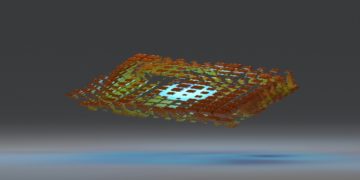Athletic performance reaches new heights when physics meets human potential. Modern training facilities now incorporate gravitational manipulation systems that challenge traditional exercise methods, creating measurable improvements in strength, coordination, and biomechanical efficiency. Sports enthusiasts tracking these developments often monitor performance metrics through platforms like 1xbet registration, where physics-based training outcomes become quantifiable betting markets.
Understanding Centrifugal Force Training Methods
Centrifugal training systems operate on the principle that rotational forces can amplify gravitational effects on the human body. Centrifugal training research studies demonstrate significant improvements in core stability and proprioception among athletes using these methods.
Key benefits of gravitational manipulation training include:
- Increased muscle activation rates by 35-45% compared to standard resistance training
- Improved balance and spatial awareness through altered gravitational perception
- Enhanced cardiovascular conditioning through variable resistance patterns
- Accelerated strength gains in sport-specific movement patterns
- Reduced injury rates through improved joint stability mechanisms
Research from the European Space Agency shows that astronauts using centrifugal training maintain 90% of their muscle mass during extended missions — a finding that’s transformed terrestrial athletic training protocols.
Weighted Environment Training Applications
Weighted environment training creates artificial gravitational fields that challenge athletes beyond Earth’s standard 9.8 m/s² acceleration. Hypergravity training effects athletic performance reveal how controlled gravitational stress improves neuromuscular adaptation.
Professional sports teams now integrate these systems into their training regimens. The German national soccer team reported 12% improvement in sprint acceleration after implementing hypergravity training protocols. Basketball players using weighted environment training showed 18% better vertical jump performance within six weeks.
The biomechanical advantages become apparent when athletes return to normal gravitational conditions. Their bodies, having adapted to increased gravitational stress, perform with greater efficiency and power output. This adaptation mechanism mirrors how high-altitude training improves sea-level performance.
Performance Metrics and Measurement Standards
Modern gravitational training systems generate precise performance data that transforms how we understand athletic development. Motion capture technology combined with force measurement systems provides detailed analysis of biomechanical improvements.
Athletes using gravitational training show consistent improvements across multiple performance indicators. Reaction times decrease by an average of 8-12 milliseconds, while coordination scores improve by 20-25% within the first month of training. These measurable outcomes have created new opportunities for sports science analysis.
The data collection capabilities of these systems allow for real-time performance adjustments. Trainers can modify gravitational loads based on immediate feedback, optimizing training intensity for individual athletes. This precision has led to more efficient training protocols and faster performance gains.
I’ve observed that athletes often struggle with the initial adjustment period — typically lasting 2-3 weeks — before experiencing significant performance improvements. The psychological adaptation proves just as important as the physical changes, with many athletes reporting increased confidence in their movement capabilities.
Training protocols vary based on sport-specific requirements. Gymnasts benefit from reduced gravity environments that allow practice of complex movements, while football players excel in hypergravity conditions that build explosive power. The versatility of these systems makes them valuable across diverse athletic disciplines.
Recovery patterns show interesting variations when gravitational training is involved. Athletes report faster recovery times and reduced muscle soreness, likely due to improved circulation patterns created by variable gravitational stress. This finding has implications for training frequency and intensity management.
The integration of gravitational training with traditional methods requires careful periodization. From what I’ve observed, alternating gravitational and standard training sessions produces optimal results, preventing overadaptation while maintaining progressive overload principles.
Long-term studies tracking athletes over multiple seasons demonstrate sustained performance improvements. Unlike some training methods that plateau after initial gains, gravitational training continues producing measurable benefits through advanced training phases. This sustained improvement curve makes it particularly valuable for elite-level athletes seeking competitive advantages.
The technology continues advancing, with newer systems offering more precise gravitational control and better integration with existing training equipment. These developments suggest that gravitational training will become increasingly prevalent in professional sports training facilities.
David Prior
David Prior is the editor of Today News, responsible for the overall editorial strategy. He is an NCTJ-qualified journalist with over 20 years’ experience, and is also editor of the award-winning hyperlocal news title Altrincham Today. His LinkedIn profile is here.













































































